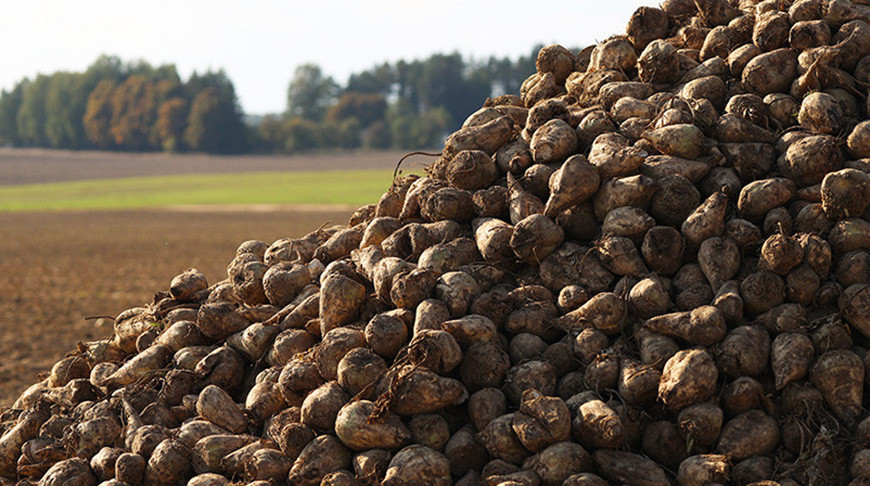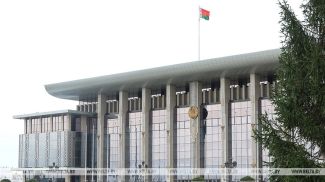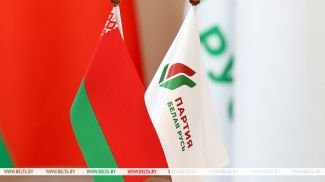
These days we do not hesitate when we put a sugar cube into a cup of tea, but in days of old this sweet product was an expensive overseas import that was available only to nobility. It could have remained an imported indispensable ingredient for Belarusians, even if not a delicacy. In the new episode of BelTA’s YouTube project After the Fact: Lukashenko’s Decisions we will tell you how Belarus turned from a sugar-importing country into a sugar-exporting country. What did it cost to lick manufacturing facilities into shape? And why sugar business is not sweet at all these days.
How did Belarus’ sugar industry develop?
Scientists in many European countries tried to replace sugar cane imported from Cuba and Brazil with raw materials from other plants. In Russia the production of sugar out of sugar beet was established only in 1809. Belarusians trying to recall the "sweet history" usually remember Aleksandr Skirmunt, who invented the technology that accelerated sugar production by ten times. The first sugar factory in our country was set up in 1830. Some believe that Belarusian producers could not keep up with competitors from other countries, so no rapid development of the sugar industry happened. Only one sugar factory has been operating till the 1960s – in Slutsk. Another three were built later on: in Gorodeya, Zhabinka, and Skidel. But can this Soviet legacy be called "sweet"?

During a working trip to Dobrush in February 2020 Aleksandr Lukashenko pointed out that four sugar refineries have been operating in Belarus since the Soviet times. Moreover, modern Belarus inherited them in the state of disrepair and they did not actually produce sugar. “Things went so far that I put handcuffs in front of two responsible executives and said: ‘If there is no sugar by morning, you know what will happen’. By morning sugar had appeared in all the retail outlets. Which means sugar had been stockpiled before the period of peak demand in order to artificially inflate prices. I was tired of going around and persuading these executives, so I made them work like that,” the Belarus president recalled.

How much sugar beet is made in Belarus annually?
The president authorized a series of economic measures that allowed growing about 4 million tonnes of sugar beet annually. Enterprises were modernized to increase output. The president’s demand was to completely stop importing sugar in favor of producing the necessary amounts of it domestically.
“Just think about it: in the past we used to spend about $0.5 billion to import sugar, flax products and brewer's barley. We bought the goods abroad - in Germany and Czechia, spending the hard currency we work so hard to earn. Now all of it will stay with us, with our peasants. Thus, we start working and making the necessary products for ourselves instead of some foreigners to the benefit of their economy. Who is in favor of our becoming increasingly dependent? Independence is, first of all, about economic independence, when there is something to eat, when there is something to wear, when people can calmly look into tomorrow. This is true independence, not idle talk,” Aleksandr Lukashenko said at the national festival of rural workers Dazhynki in September 2004.
From sowing to harvesting. The entire agricultural season is always closely monitored by the president. Sugar beet is a crop of strategic importance and receives close attention. The president has repeatedly underlined that Belarus will save huge amounts of foreign currency if it stops importing sugar. For the sake of clarification: the country gets $165 in profit per tonne of sugar beet. For the last seven years Belarus has been exporting almost $1.5 billion worth of sugar every year. We are one of the main suppliers of sugar in the world.

“According to studies of the Academy of Sciences virtually 27% of the country’s farmlands are fit for growing sugar beet. Naturally, most of these lands are located in Grodno Oblast: about 46% of the farmlands. Rather large areas that are fit for growing sugar beet can be found in Vitebsk Oblast and Minsk Oblast. The share of such lands is smallest in Gomel Oblast,” said Nikolai Leshik, Head of the Central Office for Crop Farming at the Agriculture and Food Ministry.

What did the modernization of Belarusian sugar refineries cost?
The modernization of sugar refineries is a separate matter. As much as $202 million was invested in them in 2015-2022. The president once shared details of what it cost to lick the manufacturing facilities into shape.
“I decided in favor of modernizing these sugar refineries. It is my response to mass media praising the directors for upgrading the sugar refineries. But where did they get the money for it? I went to Xi Jinping to ask for money for this refinery. We worked hard and upgraded four refineries. We made them look top-notch,” Aleksandr Lukashenko told reporters during a working trip to Dobrush in February 2020.

Attempts to profiteer from this remarkable transformation came down to nothing. Do you remember the story around the detention of the directors of the sugar refineries? The president has a very principled stance on this: it is simply unacceptable when someone tries to take advantage of the assets that belong to the labor collective and the whole nation.
“I am defending interests of the state. And you know what else really irks me? While you are going out of your way trying to get the best deal on oil, gas, metals, something else, to complete construction projects and pay people good salaries, these scumbags are stealing in broad daylight. Is that okay? It's not okay. That's why it should be a lesson for other directors,” Aleksandr Lukashenko told journalists in Dobrush in February 2020 as he commented on the arrest of directors of sugar refineries.

Modernization is still ongoing. Take, for example, Slutsk Sugar Refinery that holds more than a third of the domestic sugar market. Last year the fourth tank for storing beet sugar syrup was built here, a new tank for storing molasses was put into operation, and several workshops were revamped. Today almost all the equipment of the enterprise has sensors. Thanks to them, specialists can monitor the entire production cycle online. All in all, all the four sugar factories can offer a wide range of products. Sugar lovers are offered pressed, shaped, packaged and crystalline sugar.
“At present the main factor that affects the yield of an agricultural crop, including sugar beet, is technology compliance, decent mineral nutrition, proper care for growing crops, and the creation of favorable conditions. On the whole, Belarusian fields are home to about 100 hybrids of sugar beet from 7 producers. The Belarusian hybrid Krasa [Beauty] will be zoned in 2024. It has passed trials and demonstrated a decent level of yield. The use of hybrids, which were added to the state registry in the last few years, gives reasons to believe that they offer the highest potential of biological yield,” Nikolai Leshik said.
Lukashenko wants more effort to find markets for Belarusian sugar
Last year Belarus had a record sugar beet harvest of over 5 million tonnes. This is enough to keep the sugar factories busy and even to sell some of it to other countries. By the way, products of the domestic sugar factories accounted for about a quarter of the total amount of deals involving agricultural exports concluded at the Belarusian Universal Commodity Exchange in 2023. In particular, in 2023 the supply of white granulated sugar abroad increased 2.5 times over 2022. The profitability of sugar production, of course, depends on the situation on the world market. If supply exceeds demand and the harvest in the producing countries is good, the price goes down. It is not at all “sweet” when traditional markets are flooded with sugar. The president calls to be more pro-active in production and sales.
“Please, stop nagging. Your business is to sell what peasants have grown. Russia is not the only market in the world. We need to get things together. This is not so much about production, but rather about sales. They [agricultural enterprises] will harvest and prepare products for sale, and we need to help them sell the produce. Think where you will sell sugar. You must not reduce output in any case. It is desirable to maintain at least the same profitability as we had in the previous year,” Aleksandr Lukashenko said during his working visit to Smolevichi District, Minsk Oblast in August 2019
How many Belarusian companies grow sugar beet?
In any unclear situation Belarusians rush to panic-buy... sugar. There are many jokes about it. Now think about it logically: our country fully provides itself with this product. Sugar beet harvest has been consistently good, too. So why should we artificially create a frenzy?

“I understand if there is some emergency and some products are missing. They say, ‘we couldn't get it in time, logistics failed’. It is not the UK that does not have enough drivers to get fuel to gas stations. I am not [former British Prime Minister Boris] Johnson, I know the root cause of the problem. So make sure that we do not have any disruptions of supplies or price hikes,” Aleksandr Lukashenko said at the meeting to discuss progress in agricultural works in Belarus in October 2021.
Some 85% of Belarusian land is perfect for sugar beet cultivation. All in all, about 370 enterprises are engaged in growing this crop on an industrial scale. The work of agrarians and industrialists is obviously not sweet. But thanks to their labor, our life gets a better taste.
“You see there is a war over sugar today. Fortunately, only in the stores. There is no emergency. Roll up your sleeves and start working,” the president said at a meeting to discuss spring field work in March 2022.













